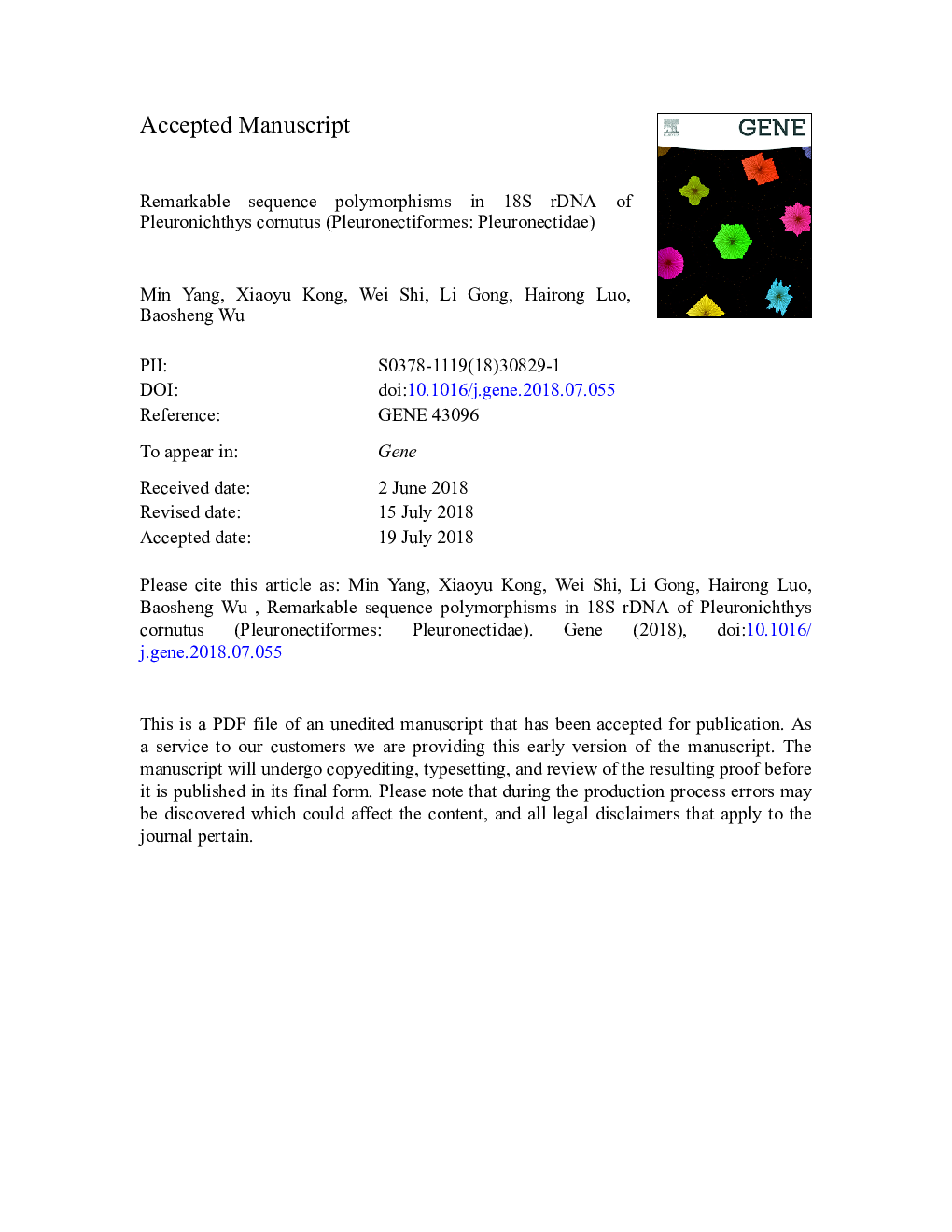| Article ID | Journal | Published Year | Pages | File Type |
|---|---|---|---|---|
| 8644423 | Gene | 2018 | 33 Pages |
Abstract
Highly conserved 18S rDNA sequences encode ribosomal RNA and evolve in a concerted manner. In this study, 178 sequences of 18S rDNA from the ridge-eyed flounder, Pleuronichthys cornutus, were analyzed. The total sequences yielded five distinguishable types of 18S rDNA-A, B, R, S, and L-that were defined based on sequence alignments, clone clustering, and recombination detection. The length of 176 clones ranged from 1838â¯bp to 1846â¯bp, with one particularly short clone reaching only 1466â¯bp and one long clone reaching up to1869â¯bp. As per current criteria for pseudogene inference, Type S was inferred to be a pseudogene due to its truncated length (380â¯bp) and low minimum free energy (â536.9â¯kcal·molâ1). Type L had a unique 20-bp insertion and was also predicted to be as a pseudogene. Types A and B showed 31 differential sites, which in Type A was consistent with 18S rDNA sequences found in six other flounders, while Type B and recombinant Type R were not. Maximum K2P genetic distances were calculated within Type B (0.0232) and R (0.0313); these were much higher than that of Type A (0.0093) or between the six flounders (0.011). Only Type A was detected by reverse transcription experiments and linked to functional ITS1 and 5.8S fragments; Types B and R were linked to both functional and pseudo genes. Accordingly, Type A is likely the functional gene, and Types B and R are probable pseudogenes. The heterogeneity of the five types revealed that 18S rDNA sequences evolved in a non-concerted evolution manner in P. cornutus. Furthermore, our results suggest that more features should be used to identify functional or pseudo genes.
Keywords
Related Topics
Life Sciences
Biochemistry, Genetics and Molecular Biology
Genetics
Authors
Min Yang, Xiaoyu Kong, Wei Shi, Li Gong, Hairong Luo, Baosheng Wu,
